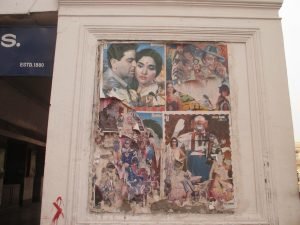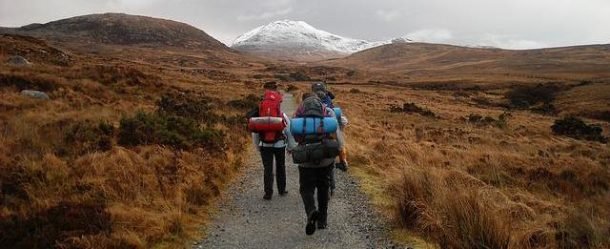
The overnight bus dropped me at Himachal Bhawan in New Delhi at the crack of the dawn. As I came out of the bus, along with the other passengers, the auto rickshaw drivers surrounded me and asked if I need their services. I denied and decided to walk. They moved to the other passengers. The exorbitant rates that they threw were not acceptable to the passengers and many of them decided to move on or look for the nearest Metro railway station.
Delhi, the capital town of India, grows every moment. The transport system here has improved at a noticeable mark. But the behavior of these auto-rickshaw drivers has not changed at all. All the auto rickshaws are fitted with the fair calculation meters, but the drivers refuse to go on them and ask for more money. They think that the passengers are foolish.
Since the Metro Rail Station of Shivaji stadium was not very far, where I had to go to, so I thought that walking through the wide roads of New Delhi in the early hours of the day would be an amazing experience. That was the morning of the month of June. The summer was at its peak and for a man who had come from the hills, forty-five degrees of temperature was unbearable. I noticed the wet soil on the sides of the road. The previous night was a rainy night that had raised humidity.
Walk along Barakhamba Road
I lifted by rucksack on my back and followed the Barakhamba Road leading to Connaught Place. I recalled the days of early nineties when I lived in Badi More Sarai, a railway colony where my father was allotted a railway quarter. In those days the easiest way for us to reach Connaught Place was to take a three wheeled fatfati rickshaw from Fountain Chowk. That, a three wheeled vehicle, fitted with the engine of a Motor Cycle, had a capacity of eight passengers who would sit behind the driver, four on each side, facing each other. The driver had a special seat for himself where he would place himself easily, with his legs hangin on oth the sides to control the break and the gears. The handle of the rickshaw was there to manage the directions of the vehicle.
Those vehicles were stopped by the government as they ran on diesel and produced poisonous gasses that polluted the atmosphere. Later the traffic in Delhi increased to uncontrollable situation. I was never interested in living in this city so I moved to the hills in the year of 2000.
In those days whenever I walked through Barakhamba Road, I hardly noticed the beautiful two story bungalows built on either side of the road. These were built by the British government for the British officers. The bungalows have flat rooftops and mostly they are designed by Edwin Lyuten’s or his subordinates. All of them have vast lawns around them and they are protected by a boundary wall on all the sides.

Connaught Place
I further proceeded towards the traffic signal where it is impossible to cross the road during the peak hours. At half past five in the morning the road is almost traffic free. A few cars passed me and without stopping at the red signal moved ahead. They stop only when the policeman is there.
Across the traffic signal there were many auto rickshaws parked on the road side. The drivers slept in them, on the rear seat. There is no enough space for a fully grownup man to sleep on that seat but these drivers are habitual of spending their nights like this. The head placed on an iron rod and legs extended to the outer part of the body of the rear seat they keep fighting with mosquitos hoovering around them.
The buildings of Connaught Place are a marvel example of Lutyen’s architecture. Generally built with a verandah on the front the high rising structures have just two floors. They were built in order to keep them cold on summer days.
The top of Palika Bazaar, the underground market, known for electronic gadgets was full of garbage. During the day many vendors come here, set up their stall and sell their stuff to the visitors. The cheap quality stuff sold on fix but low price attracts many costumers. It is a shame that when they leave the area they leave all the torn wrappers of the material sold, there. It looks like no one comes to sweep them. When shall we learn to keep our area clean?
A police van parked on the road side was there to keep a watch on the area. Policemen sitting in them read newspaper and sipped tea. I don’t know how they watched the area when they themselves were busy reading news.

A Cinema Hall and a Temple
A cinema hall astonished me with some posters of old movie film by Raj Kapoor on its walls. Apart from him Vajayanti Mala who played the lead heroin and Rajender Kumar, better known as Jubli Kumar due to continuous Jubli hits, nearly twenty-five in his life, were also visible in the poster. Sangam, a movie of sixties, Mera Naam Joker – another movie by Raj Kapoor released in seventies and a poster of another movie on which the name was lost but Dharmender – the dashing hero of the movie was visible in his cowboy hat. Days are gone when we used to see these types of posters on the walls of the cities. What an era was that!!!
 I followed Baba Kharak Singh Marg. It passes the old Hanuman Mandir where I saw people sleeping on the pavements and on roadside. Ooof What a terrible life they have. Do they belong to someone or some family? Do they have a house to live in or just pass their life on the roads, on the pity of the visitors to the temples? I don’t know where do they go to when the winter arrives. They looked very dirty and perhaps had not taken bath for may days. It is hard to say for me how do they survive in this hot weather.
I followed Baba Kharak Singh Marg. It passes the old Hanuman Mandir where I saw people sleeping on the pavements and on roadside. Ooof What a terrible life they have. Do they belong to someone or some family? Do they have a house to live in or just pass their life on the roads, on the pity of the visitors to the temples? I don’t know where do they go to when the winter arrives. They looked very dirty and perhaps had not taken bath for may days. It is hard to say for me how do they survive in this hot weather.
My aim was to catch the Metro train from the Metro Station to continue my journey. The station located a few meters ahead of the temple. I spent some time there to observe the morning advancing towards the day. The days in Delhi are chaotic. That city never sleeps. Something is always going on there.
The morning visitors to the temple had started arriving. Some waited outside the temple for the doors to open
whereas some others seated in their air conditioned car and waited. Is it necessary to visit a temple in the morning or could they look for a temple inside them? Hard to say.
I entered the Metro Station to catch my train.


One story more to listen and think about….